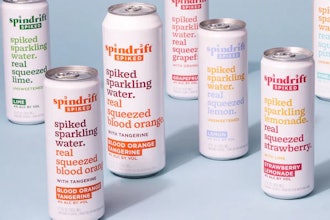
ALBANY, NY — Manufacturers are targeting calorie-conscious consumers by offering plant-based proteins in frozen meals and dairy items. Increasing trend of ready-to-eat plant-based foods are offering new avenues of growth, observes a study by Transparency Market Research. Particularly, the study highlights the trend of growing application of texturized vegetable protein in high-protein snacks among millennial. All these trends permeating changing preferences of consumers underscore a high revenue potential in the texturized vegetable protein market.
The global texturized vegetable protein market revenue valuation was pegged at approximately $1.1 billion in 2019. The market which is expected to expand at a CAGR of ~6 percent during 2019-2029 to touch valuation of $2 billion by the end of 2029.

Key Findings of Texturized Vegetable Protein Market Study
- Based on nature, conventional texturized vegetable protein currently leads the market by holding the major share; consumption of organic texture vegetable proteins are slowly picking pace.
- Soy protein is the major product type as it held the major share in the texturized vegetable protein market in 2018; the segment is expected to rise at an impressive CAGR during 2019-2029, and reach output of ~715,800 metric tons by the period-end
- Geographically, Europe and North America hold prominent shares in the texturized vegetable protein market. The presence of several companies planning to consolidate their stakes in the market provides substantial revenue boost; few are harnessing cutting-edge extrusion-based technologies to meet clean label requirements
Texturized Vegetable Protein Market: Key Driving Factors
Analysts at TMR foresee the growing trend of veganism a key factor that impacts the consumer demand in the texturized vegetable protein market. A fact attributing this trend is growing sales of plant-based food and beverages in some countries. These proteins have also become a popular way for food and beverages manufacturers in countries to adopt clean labeling regulations. The growth dynamic is evident among frozen and dairy manufacturers. New product launches have focused on meeting the protein needs of consumers seeking new plant-based food products. Advances in texturizing proteins have allowed end-use industries to unveil meat alternatives.
Key Impediments to Texturized Vegetable Protein Market Players
Despite several promising avenues in the texturized vegetable protein market, there are a few notable challenges hindering players to tap into these avenues. A few factors worth mentioning are:
- High expectation of consumers of plant-based products in relation to taste and flavors has raised the ante for incumbent regional and global players.
- Finding right blend of proteins involving pea and rice is also a challenge.
Texturized Vegetable Protein Market: Region-wise Analysis
On the regional front, North America and Europe are prominent markets. Players in the regional markets are leaning on tapping into vast opportunities emanating from the increasing trend of vegan foods and the shift toward flexitarian diets. These regional markets have also benefitted from stringent implementation of clean label requirements. Focus of the food industry to help lower the carbon footprint of meat industry has also catalyzed demands for the use of texture vegetable protein in high-protein plant-based food, especially in convenience food segment.
Competition Landscape
The presence of several players in the texturized protein market makes it increasing fragmented. The leading player holds a mere 14% of the total share. Various food processing companies are expanding their production facilities in emerging markets. Finding the right mix of plant proteins is a challenge for them, which top players will focus on to consolidate their positions on the texturized vegetable protein market. In addition, players provide an array of texturized vegetable proteins by meeting the protein needs of nutritional supplements manufacturers.
Key players include Crown Soya Protein Group, Puris Proteins, Roquette Frères, MGP Ingredients, Vestkron A/S, and Cargill Inc.






















